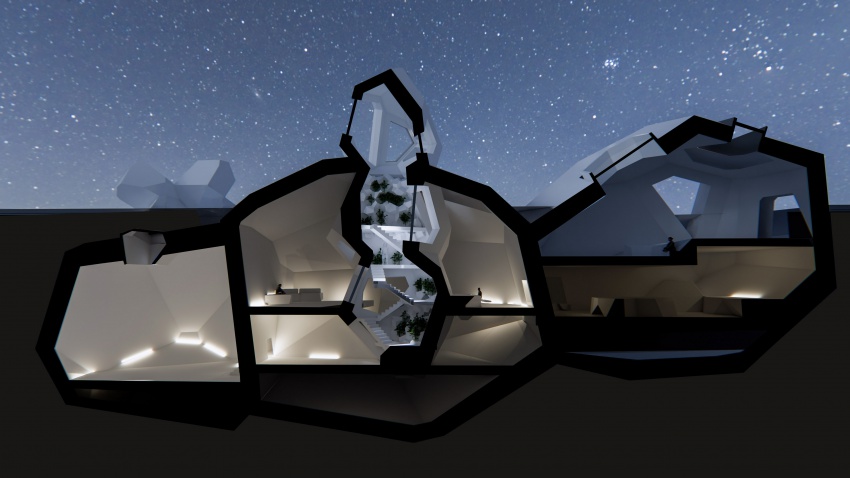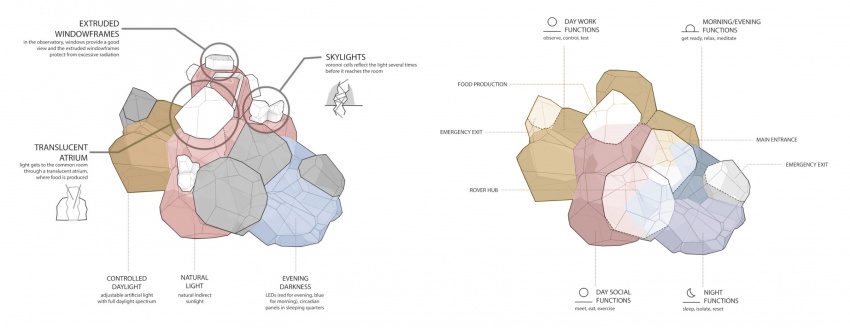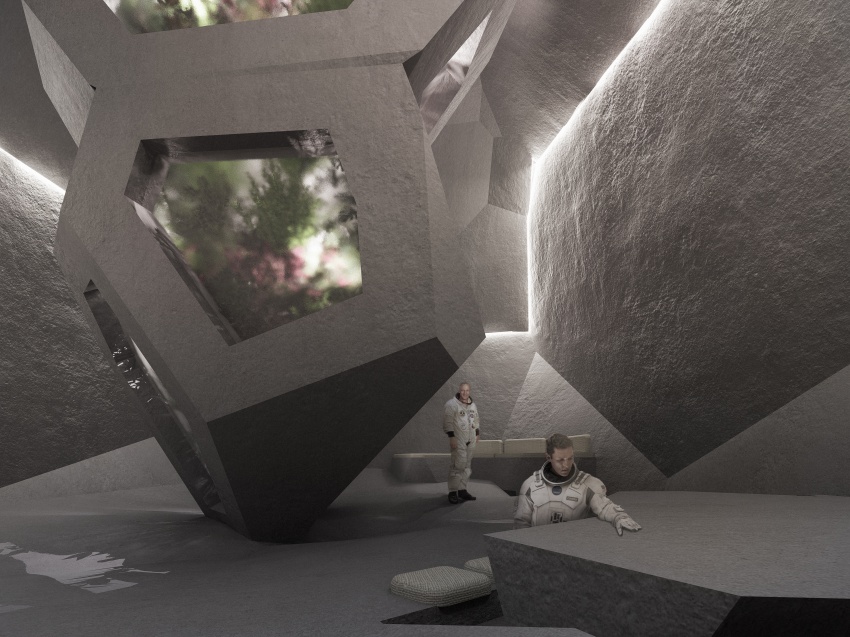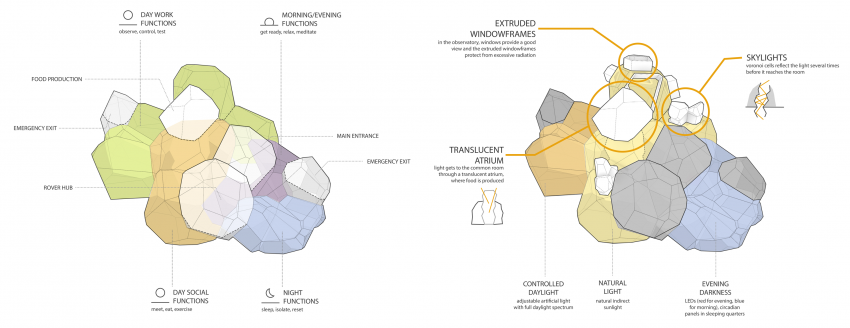Shared:WS2024MSc2SAG2Design
Group 2: Marina Kathidjiotis - Katarzyna Prokopiuk - Cătălina Perșunaru - Jan Kwaśnik
Final design | 22.04.2024
The design of the Moon Habitat follows the voronoi logic on all scales to allow for structural, functional and visual flexibility. It is designed to accommodate a HRI-based construction process, using the lunar regolith available on site. Different lighting strategies are applied to simulate the light exposure on Earth and help maintain circadian rhythms of the astronauts.
concept
plan and sections
The habitat is divided into smaller volumes, each representing a specific function. The rooms are grouped in three zones - night functions, social day functions and work-related day functions. They all use various natural and artificial lighting strategies to simulate the 24h day on Earth. Natural sunlight dominates in the social day functions, including the central atrium with a food production unit acting as a big skylight.


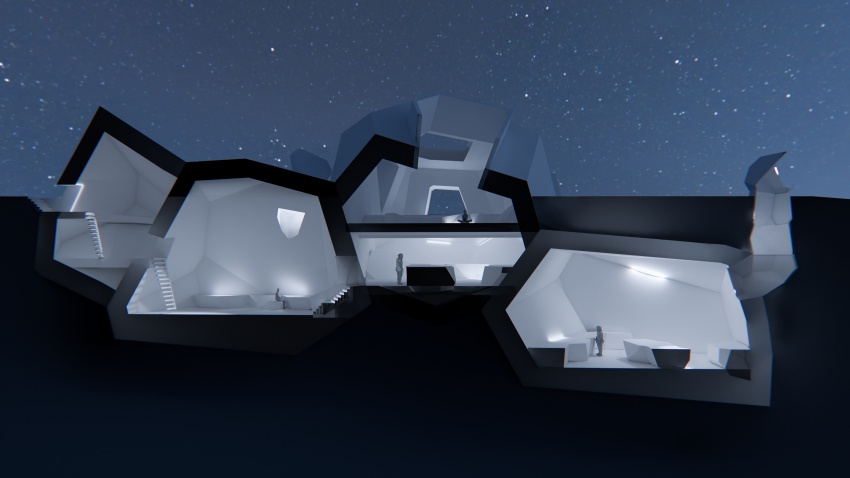
visualizations
Moonoroi | midterm presentation 08.03.2024
The presentation includes the design concept for a Moon station based on the Voronoi cells principle. The project is driven by the idea of helping scientists in space maintain their circadian rhythms by the use of light - both natural and artificial.
Circadian rhythms | presentation 01.03.2024
In this stage of the project, we focused mostly on the research on our project's driving idea - circadian rhythms and psychological effects of spending time in space. Our goal was to understand how we can provide lighting strategies that help to maintain a healthy internal clock of the astronauts, and to make the Moon station self-sustainable. We implemented those ideas in the first iteration of the parametric design.
Moonstation - first ideas | presentation 23.02.2024 | case study Rhizome 2.0
We started the design process by analyzing the context of our chosen site - the Moon. The functional program proposed for the building is based on the requirements from the "2023 ACY Moon Station" competition and our personal research. Thanks to the case study of the Rhizome 2.0 project we could better understand the specifics of Human to Robot Interaction and digital prototyping.
